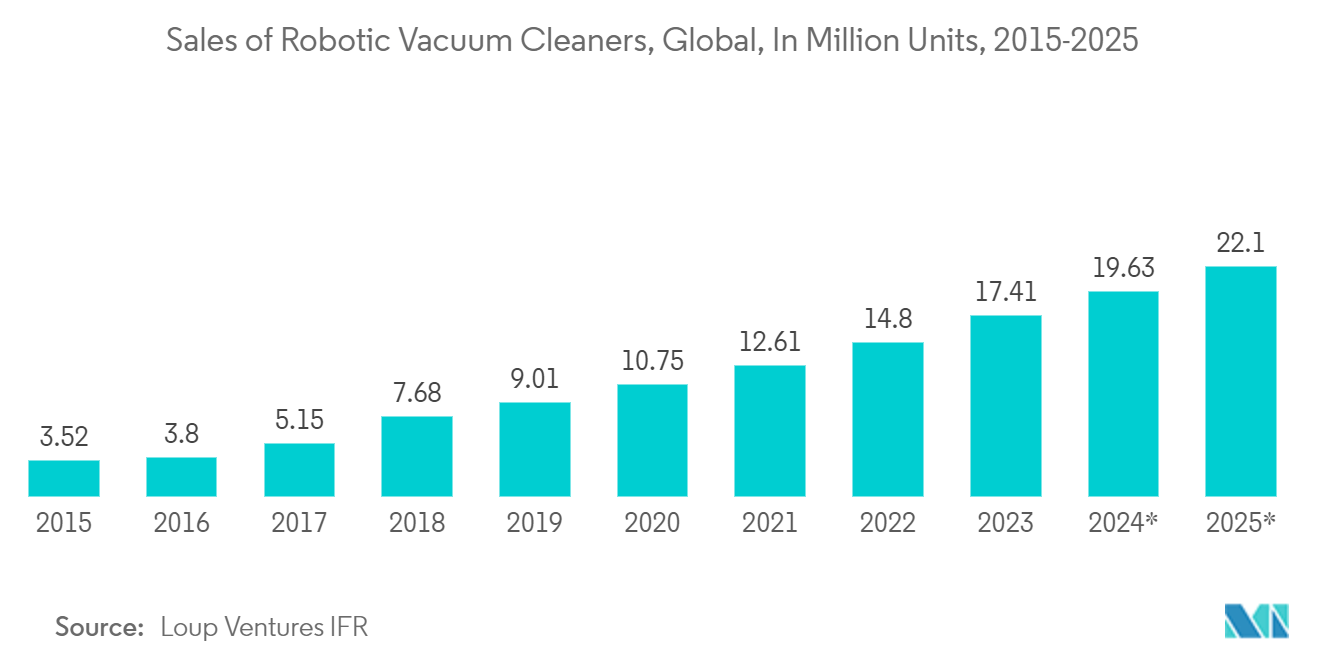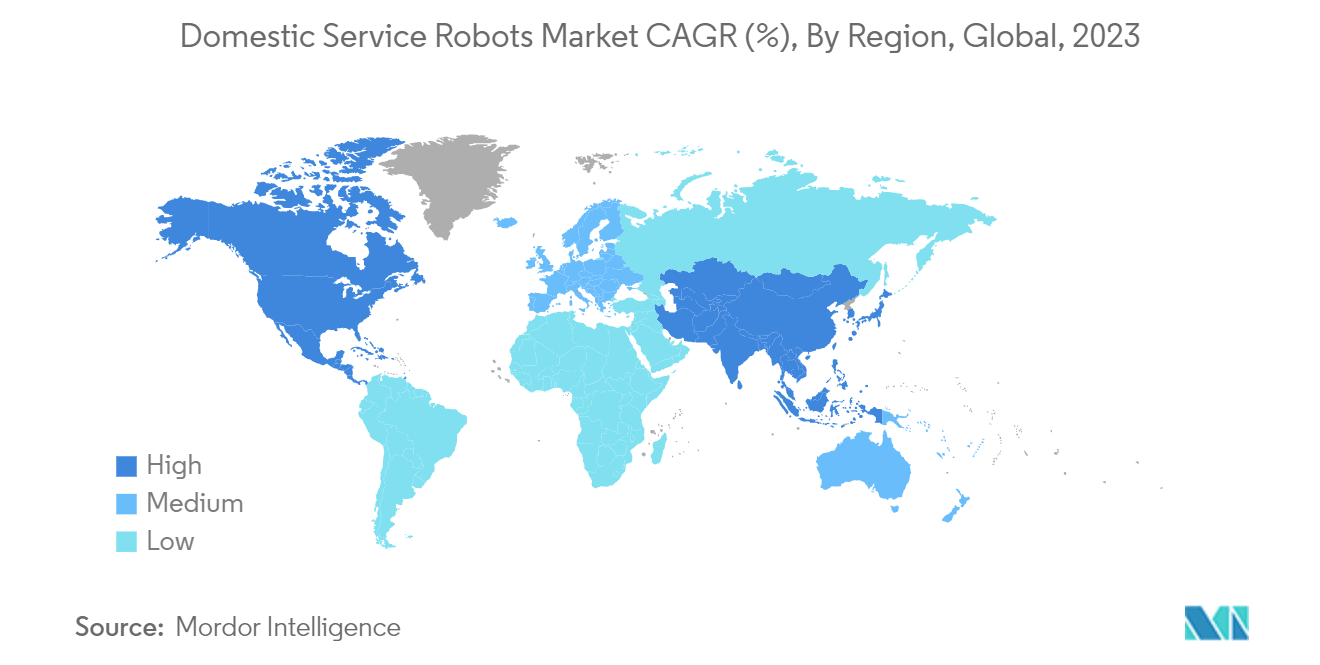Market Trends of Domestic Service Robots Industry
Domestic Robots Segment to Hold Significant Market Share
- The domestic segment is expected to experience significant growth and capture the largest market share in the coming years. This category includes robots designed for tasks such as vacuuming, lawn-mowing, pool cleaning, and window cleaning. Domestic robots are predicted to gain a larger market share due to their practical ability to automate repetitive household chores. Sales of domestic robots are expected to rise as more start-up companies focus on offering these devices rather than entertainment or leisure robots.
- It is now essential for most consumers to have access to professional-grade household cleaning supplies. In particular, cleaning robots offer the advantages of contactless and intelligent cleaning compared to manual services. This presents a great opportunity for growth in the home cleaning robot industry. Companies producing robot vacuums have adjusted their product development strategies and marketing plans to focus on personalization in response to the rising demand.
- As per the International Federation of Robotics, the worldwide shipments of robotic vacuum cleaner units are projected to increase from 2015 to 2025. In 2023, the total global shipments of robotic vacuums reached 17.41 million units, with forecasts predicting that this number will rise to 22.1 million units by 2025.
- It appears that the future prospects of the domestic market are quite positive. The growing demand for automation and smart home technologies, as well as ongoing technological advancements, are fueling the market's expansion. A key factor contributing to growth in the domestic sector is the decreasing costs associated with manufacturing robotics technology due to improvements in materials, production techniques, and economies of scale. As a result, domestic robots have become more accessible and cost-effective for consumers.
- Domestic robots enhance space efficiency and elevate the quality of life in urban settings. With reduced manufacturing expenses, domestic robots become more accessible to consumers at a more affordable price point. This affordability allows a broader spectrum of households to consider investing in these robots, ultimately driving higher adoption rates and market expansion.

Demand in North America is Expected to Grow Significantly
- The North American domestic service robots market is experiencing growth due to advancements in technology and rising consumer demand. Industry leaders are prioritizing innovation and sustainability to remain competitive. Government policies and regulatory support are also contributing to the market's expansion.
- North America plays a crucial role in the robotics market, and it is known for its innovation and leadership in adopting new technologies. The market is growing due to the increasing use of robotic vacuum cleaners, home automation systems, and automated mopping and pool cleaning devices. An example of this innovation is the Astro robot from Amazon, which is designed to monitor a user's home, check on family members, and even deliver household items. This smart robot can perform various household tasks, such as patrolling the house for any unusual activity and working with Alexa services.
- The main factor contributing to the market’s growth is the adoption of robotic vacuum cleaners to reduce domestic chores. The use of computers in modern households is becoming more common, offering convenience and saving time on household tasks. Despite the fact that traditional vacuum cleaners have simplified housecleaning, they are often loud and cumbersome. According to the US Bureau of Labor Statistics, the annual cost of employing cleaning laborers for residential purposes is approximately USD 27,000. In contrast, investing in a cleaning robot involves a one-time cost of around USD 25,000.
- Hence, the use of cleaning robots has been significantly supported by their affordability and precision in cleaning. With the growing popularity of smart homes, robotics is expected to play a crucial role in the overall smart home environment. According to projections from Smart Robot Vacuum Cleaners Statistics, it is anticipated that by 2024, the number of Smart Homes in North America will reach 78 million, with a widespread adoption of intelligent robot cleaners.
- It should be noted that the domestic robots market in North America is influenced by various regional partnerships and acquisitions. An example of this is when Hayward Industries Inc. acquired Paramount Leisure Industries Inc., a company that specializes in in-floor pool cleaning equipment. This acquisition is expected to create numerous opportunities for the growth of the business and its customer base. Some reputable companies that are actively developing home robots include iRobot, Robomow, Mayfield Robotics, and others.
- In April 2024, Robot Corp., a renowned company in the consumer robotics industry, unveiled the Roomba Combo Essential robot in North America. Priced at USD 275, this 2-in-1 robot vacuum and mop is designed to be affordable and user-friendly. Building on the success of the Roomba 600 Series, the Roomba Combo Essential offers improved performance and a range of convenient features to enhance the cleaning experience for customers. Robot Corp. proudly announced that they have achieved the significant milestone of selling over 50 million robots globally.


